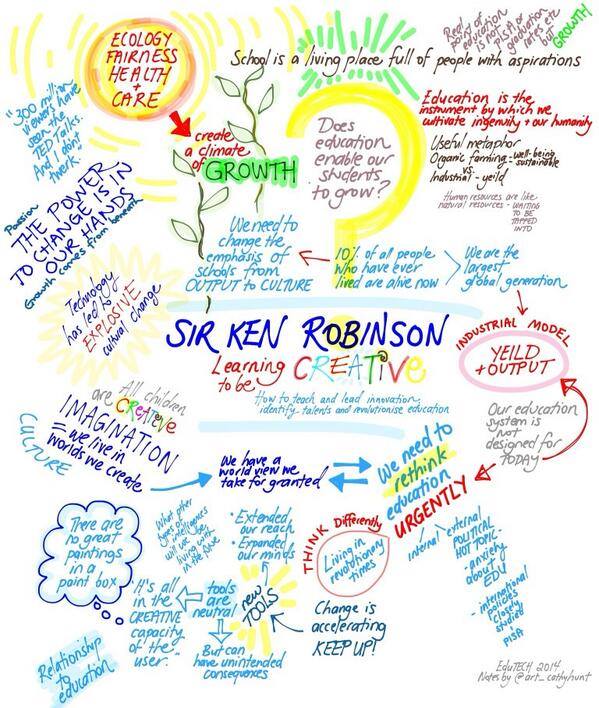Learning to be creative | A Keynote by Sir Ken Robinson
For those of you who doesn’t know Sir Ken Robinson, his bio can be found in wiki. I was fortunate enough to hear his keynote ‘talk’ at EduTECH conference on the third of June, 2014. His TEDTalks in 2006 was said to be the most watched (26million+) TEDTalks of all time.
Introduction
Education has become a very hot global political issue and he called it Global Education Reform Movement aka germ (a joke). Governments are so fixated on numbers (such as PISA) that they became quite anxious about education.
There are three things we need to observe:
– We live in revolutionary time
– We have to think differently
– We have to behave differently
Change is accelerating. Technology and tools that did not exist 10 years ago become integrated in our daily life. All tools are capable of good and bad. But it also leads to all kinds of ideas. At the end of the day tools are only a mean for us to deliver our creative aspiration.
The Issue
Our current education system is based on an industrial model that is probably perfect for the industrial age. It constantly looks for yield and output. Sir Ken Robinson gave an example of industrial farming that has been the method of choice for decades up until the emergence of organic farming. Industrial farming produces food at a rate the world has never experienced before.
As a consequence of this industrial farming, the world experienced unprecedented population explosion. For example, the population of Paris in 1800 was around 500,000 to 2.2 million in 2010 (less than +0.8% per year). The number was more staggering in third world countries. As an example, Brazil had around 3.2 million people in 1800 vs 192 million in 2010 (almost +2% per year). It is estimated that around 10% of all people who have ever lived in this planet is alive now.
In addition to the population issues that we faced these days, industrial farming was also quite damaging to the environment. This fact is backed by this article ‘Hidden Costs of Industrial Agriculture‘. The mono-culture plants are prone to diseases, so a large amount of pesticides and other chemicals are needed. As a result, the land itself becomes toxic while the pests have become more immune to the chemicals.
Learning to be creative
Personally, the most important info he delivered was when he proposed a change in education to utilise the same method as organic farming. In order to cultivate great students, the following aspects must be observed:
- Health and vitality: Diversity, nutrients, culture
- Ecology: Life cycle, dependents, diversity
- Fairness, equity, and justice
- Care: with assistance
Schools should be a place where students grow and their well-being is taken care of. There should be a shift from prioritising on yield and output to growth and sustainability.
In the subject of creative, Sir Ken Robinson explained the misconception of the word creativity:
- Only special people is creative
- It is only in special field(s)
- It is either you have it or not
To conclude this keynote, Sir Ken Robinson Landfill Harmonic Orchestra:
Sir Ken Robinson’s Learning to be creative keynote was summarised nicely by @art_cathyhunt:

Sir Ken Robinson’s keynote note by @art_cathyhunt